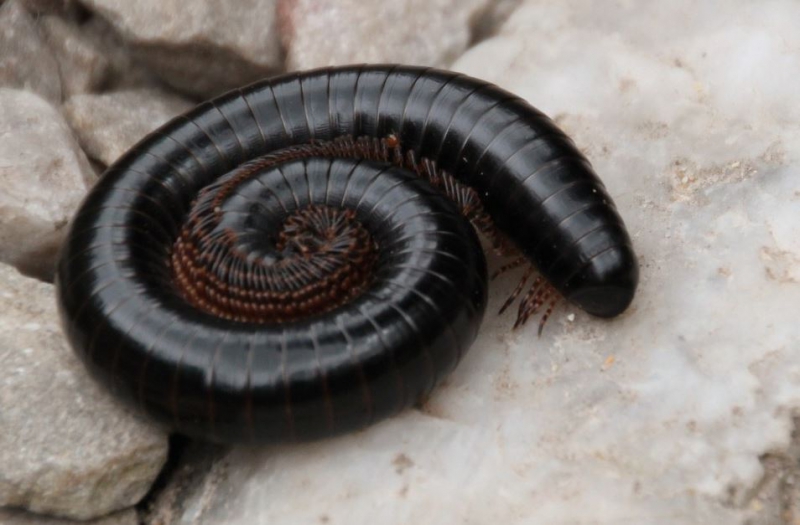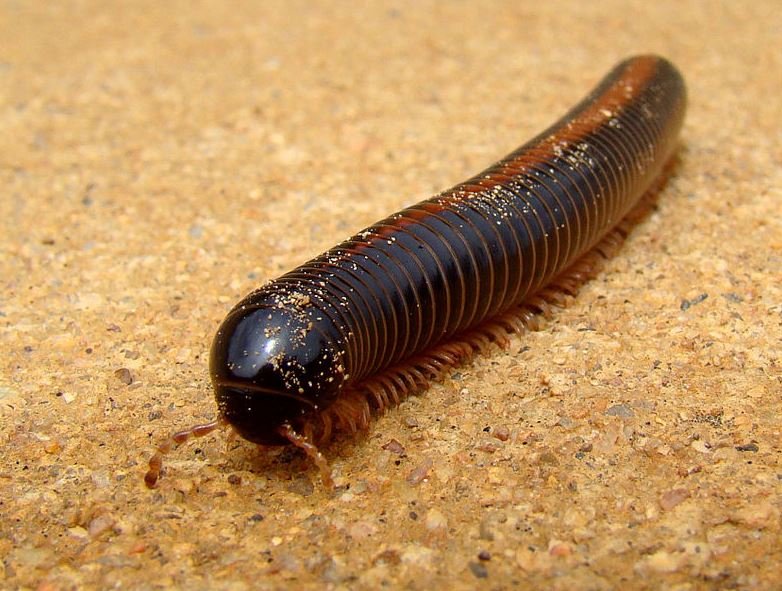While you can raise a variety of millipedes as pets, the most famous species is the Giant African Millipede. Milliped is a world-wide pet, but its identity is still uncertain. There is also a debate about the milliped's scientific name.
Typical millipedes and giant millipeds to live in the backyard are quite different in appearance and size, but the giant milliped is certainly a larger version than the regular millipedes.
Giant Milliped's Feed
Like most insects, millipedes are herbivores. In other words, it mainly eats green leafy vegetables. It also cuts fruits and vegetables very finely. The smoother the texture of fruits and vegetables, the better. Cucumber is the favorite food of Giant Philippe. Bananas, melons, peaches, tomatoes, and lettuce leaves are among the nutritious foods for millipedes, according to the pet specialty media SprucePet.com. Shallow dish or jar lid is suitable for feeding bowl. Milliped is like a prey-fed food, so it's okay to have fruit or vegetables for a day. Decaying leaves can also be food for millipedes. And you can spray calcium vitamin supplements on your diet to keep calcium in your pet's milliped body.
 |
| Like other insects, African millipeds also live on plants (Source = Max Pixel) |
The following is about the African Giant Milliped.
1. A typical milliped can grow up to a few inches, but a giant milliped can grow up to 10 inches until it becomes an adult.
2. The life expectancy of Giant Milliped is about 7 to 10 years.
3. Millipeds use two types of defenses when they feel they are at risk. It secretes a liquid that twists the body or causes an allergic reaction in the skin pits. This liquid may be dangerous if ingested into the eyes or mouth, so you should wash your hands after touching the millipedes. Some species spray more toxic liquids.
4. Millipedes move very slowly and are gentle.
5. Milliped is not hostile. Therefore, it is not a problem to raise more than one milli-ped in a tank.
6. Milliped breeds very quickly. So, if you grow a male and female millipedes together in a tank, you will soon be able to see your baby milliped.
7. The male millipedes have legs in different shape in the seventh segment known as the reproductive tract. This bridge has claws that can be picked up and curled under the body.
8. Unlike most people think, Milliped does not have a thousand legs. There are about 100 to 400 pairs of two pairs of legs. Each time you break out, your legs stretch as the segments grow.
 |
| African millipede crawls over the sand (source = Wikimedia Commons) |
Space for Giant Milliped
The space for one millipede is 10-15 gallons. The length of the cage should be longer than the current length of the millipedes, and the width should be such that the millipedes can move the body. But the most important thing is the floor space. The bottom is more important than the height of the tank, and the lid is better.
Because millipedes can sell land about three or four inches deep, you need to lay a mixture of moss and moss on the floor for a comfortable home. On top of that, you can lay a moss with bark or leaves. The flooring should always be kept moist so that the milliped's body can tolerate moisture.
Because millipeds like to live in tropical climates, they must maintain adequate temperatures. Therefore, the bath temperature may be maintained at 24 to 27 ° C and up to 30 ° C. You can also install a heater with temperature control on the bottom of the tank. It should be noted, however, that if the temperature in the tank is too high, the flooring can dry out. More important than temperature is humidity. You should use an atomizer to keep the bottom moisture.
Milliped dislikes light, and because most of the time is hidden under the flooring, lighting is not necessary. And milliped is also thirsty, so it is always good to prepare clean water.
This creature can look grim or scary, but for some people it is as precious as a cat or dog. Milliped is also a pet that needs to be loved and acknowledged.
![[Pets] Dirty, but cute pet to explore the ‘Giant African Milliped’ pets dirty but cute pet to explore the giant african milliped](https://moontore.com/wp-content/uploads/2019/02/pets-dirty-but-cute-pet-to-explore-the-giant-african-milliped-1200x700.jpg)


